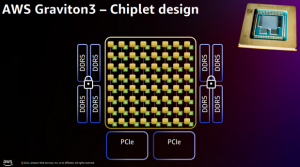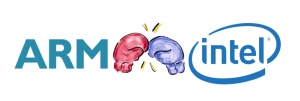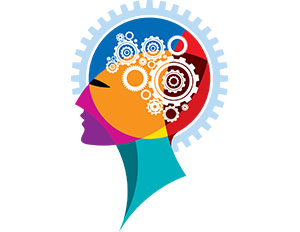Exploring the AWS Graviton Processor: Unveiling the ARM-Based Architecture

Introduction to ARM Architecture
The AWS Graviton processor family represents a groundbreaking advancement in cloud computing driven by the power and efficiency of the ARM architecture. As a Reduced Instruction Set Computing (RISC) architecture, ARM delivers exceptional performance and energy efficiency, making it a dominant force in diverse computing domains. AWS’s custom-designed Graviton processors leverage this inherent efficiency and combine it with AWS’s optimizations, resulting in remarkable performance, cost-effectiveness, and scalability for cloud workloads.
AWS offers three generations of Graviton processors, each building on the success of its predecessors. Graviton2, the second generation, introduced custom Neoverse cores, larger cache, and hardware accelerators, providing up to 7 times the performance of its predecessor. Now, the latest iteration, Graviton3, takes the evolution further with more optimizations, larger caches, and enhanced hardware accelerators, making it a compelling choice for a wide range of cloud applications.
Why do we need custom processors?
Custom processors are designed to cater to the unique needs of cloud-based services. Traditional processors, known as x86 processors, are great for running a wide range of applications, but they may not be the most efficient when it comes to handling certain workloads that are common in cloud computing.
AWS serves many customers who run various applications, from websites to databases and machine learning models. To deliver better performance and cost-effectiveness, AWS decided to design its processors tailored to their specific workloads.
How does AWS Graviton work?
Imagine you are baking a cake, and you have a dedicated tool for each step of the process. One tool might be great for mixing, another for frosting, etc. Similarly, AWS Graviton is designed with dedicated components that excel at different tasks, making the overall processing more efficient.
Imagine a busy road where different types of vehicles (cars, buses, bikes) are all mixed up, moving at different speeds. Now, visualize a dedicated highway lane for each type of vehicle: one for cars, one for buses, and one for bikes. This separation allows each vehicle to move at its optimal speed without being hindered by others.
- Similarly, AWS Gravitons architecture separates tasks into specialized components, allowing them to be executed faster and more efficiently.
- The architecture of Graviton processors leverages a technology called ARM (Advanced RISC Machines) architecture.
- This ARM architecture is different from the traditional x86 architecture you find in most computers. ARM processors are known for their energy efficiency and versatility, making them ideal for cloud workloads.
In a nutshell, Graviton processors have smaller and more streamlined components that allow them to execute specific tasks quickly and with less power. They’re like specialized tools that handle specific tasks in the cloud environment.
Key Components of ARM Architecture
In the ever-evolving world of cloud computing, innovation never takes a back seat. One such revolutionary technology making waves in the industry is the ARM architecture.
This cutting-edge design, combined with AWS Graviton processors, offers an exciting and efficient solution for businesses seeking high-performance cloud workloads. Let’s delve into the fascinating world of ARM and AWS Graviton to understand how this dynamic duo is transforming cloud computing.
1. The ARM Philosophy: Simplifying Efficiency At the heart of ARM’s success lies its Reduced Instruction Set Computing (RISC) philosophy. Unlike traditional computer designs, ARM keeps things simple by using fewer instructions to perform tasks, making it incredibly efficient. This approach allows the processor to perform complex operations more quickly and consume less power, making it an ideal choice for cloud environments.
2. Hierarchical Memory Structure: Easy Access to Information ARM architecture boasts a well-organized memory structure that resembles a neat bookshelf, ensuring easy access to information. This hierarchical organization ensures faster retrieval of data, enabling speedy processing of tasks. In the cloud, where data access speed is crucial, ARM’s memory structure shines brightly, enhancing the overall performance of cloud workloads.
3. CPU Core Design: ARM processors consist of multiple CPU cores, often organized into clusters, with each cluster handling specific tasks. These cores can execute multiple instructions concurrently through pipelining, leading to enhanced performance.
4. SIMD Capabilities: Simultaneous Superpowers Single Instruction, Multiple Data (SIMD) capabilities grant ARM processors the ability to perform multiple operations simultaneously. It’s like having a team of experts, each handling a specific task with exceptional speed. This parallel processing prowess elevates the processor’s performance, making it a valuable asset for highly parallelizable tasks often found in cloud computing scenarios.
5. NEON Technology: A Superhero with Special Powers Imagine having a superhero that excels at specific tasks effortlessly. NEON technology provides exactly that! It’s like empowering ARM with special abilities to handle specific tasks, such as multimedia processing, with unmatched efficiency. This not only enhances the processor’s versatility but also paves the way for powerful multimedia applications in the cloud.
AWS Graviton Processor Architecture
1. Custom-Designed for Cloud Workloads: AWS Graviton processors are purpose-built for cloud computing tasks. The design optimizes performance, energy efficiency, and cost-effectiveness, making them an excellent choice for various cloud-based applications.
2. Graviton and Graviton2: AWS offers three generations of Graviton processors. Graviton is the first generation, while Graviton2 is the more recent, enhanced version. Graviton2 introduces custom Neoverse cores, a larger L1 cache, and hardware accelerators for encryption, compression, and machine learning tasks.
3. Graviton3 brings more benefits than Graviton2 with the support of DDR5 memory, which provides 50% more bandwidth than DDR4. In addition, AWS Graviton3 processors in m7g and r7g deliver up to 25% better performance than the equivalent sixth-generation (m6g and r6g) instances, and carbon emissions are reduced.

4. The latest additions to Amazon EC2 instance types: The M7g and R7g. The cutting-edge AWS Graviton3 processors power these new instances and have been specifically designed to provide exceptional performance, outperforming their sixth-generation counterparts (M6g and R6g) by up to 25%. This enhancement positions them as the top-performing instances in the EC2 lineup.
- The M7g instances cater to a wide range of general-purpose workloads, making them ideal for applications such as application servers, microservices, gaming servers, mid-sized data stores, and caching fleets.
- On the other hand, the R7g instances are tailor-made for memory-intensive tasks, offering excellent performance for open-source databases, in-memory caches, and real-time big data analytics.

Advantages of M7g Instances
The M7g instances excel in general-purpose computing scenarios, making them highly versatile for various applications. Whether you need to run application servers, microservices, gaming servers, or manage caching fleets, the M7g instances are designed to deliver optimal performance and cost efficiency. These instances are particularly well-suited for workloads that demand a balanced mix of compute power and memory resources.
Advantages of R7g Instances
For memory-intensive workloads, the R7g instances are the perfect fit. They are purpose-built to handle demanding tasks such as open-source databases, in-memory caches, and real-time big data analytics. With their ample memory capacity and efficient Graviton3 processors, the R7g instances can efficiently handle data-intensive operations, providing faster data access and processing capabilities.
Benefits of Graviton Architecture
1. Cost-Effectiveness: Graviton instances often offer a lower price per vCPU, enabling cost savings for businesses with high-scale cloud deployments.
2. Energy Efficiency: ARM-based processors inherently consume less power, leading to reduced operational costs and a smaller carbon footprint.
3. Performance: Graviton processors deliver strong performance across various workloads, effectively competing with x86 counterparts.
4. Scalability: AWS offers a diverse range of Graviton-powered instance types, allowing users to choose the best fit for their applications and easily scale as needed.

How Graviton Differs from x86
● Instruction Set Architecture (ISA):
– The fundamental difference between Graviton (ARM) and traditional x86 processors lies in their instruction set architecture. Software compiled for x86 may require recompilation or adjustments to run on Graviton instances.
● Ecosystem and Compatibility:
– x86 has a well-established ecosystem with a broad range of tools, libraries, and software support. ARM’s ecosystem is expanding rapidly, but compatibility concerns may arise for specific applications.
● Performance Considerations:
– Graviton processors optimize performance for specific workloads, and their performance characteristics may differ from x86 processors. Careful performance tuning is necessary for optimal application execution.
Summary
● The ARM architecture and AWS Graviton processor form a potent combination that reshapes cloud computing.
● With efficiency, quick data access, multitasking capabilities, specialized multimedia handling, and cost-effectiveness, this partnership silently empowers businesses to unlock new cloud computing possibilities.
● Embracing ARM and AWS Graviton allows enterprises to lead the charge in cloud innovation, ensuring a promising future for high-performance and resource-efficient cloud workloads.



